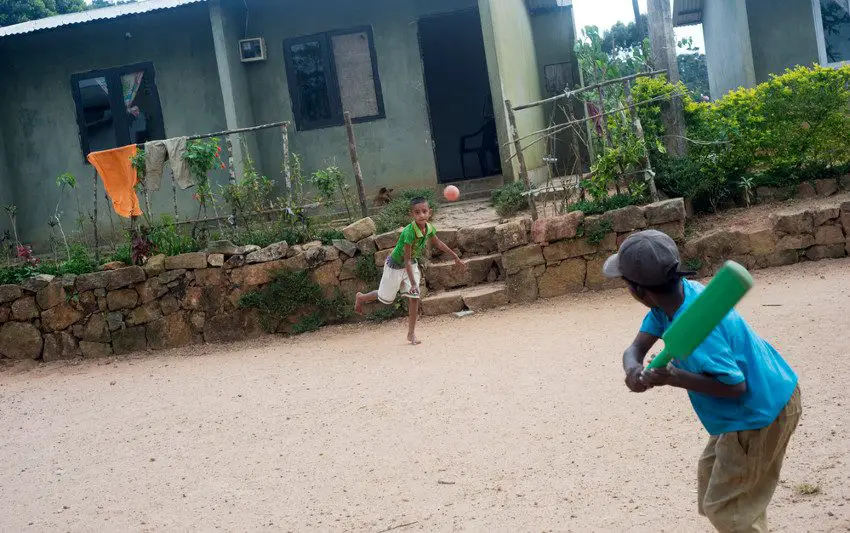Table of Contents
Chicken Road Game doesn’t wait for you to warm up. It doesn’t ask if you’re prepared. From the moment the game loads, the pressure begins. There’s no cinematic buildup or slow onboarding process — just a clean screen, a start button, and the immediate potential to fail within seconds. And that’s exactly what gives the game its intensity.
This is a crash game in its purest form. You don’t get lives, checkpoints, or long intros. You get one shot, and then you try again. The learning happens not through tutorials but through movement. You press “start,” and every tap after that becomes a test of instinct, timing, and nerve. That simplicity is deliberate — it keeps you focused on the only thing that matters: the next step.
What makes the first entry even more striking is how minimal the process is. No registration, no setup. If you’ve used a platform like https://offtheshelf.in/login/, you’ll recognize the power of getting straight into the action. The game respects your time by stripping away everything that doesn’t serve the core experience.
You’re not asked to prepare. You’re asked to react. And by the time you realize how fast things escalate, you’re already chasing your second attempt — not because you have to, but because now you need to do better.

What happens when you enter the game for the first time
The first time you enter the game, there’s no dramatic buildup. There’s no loading screen filled with animated tips or dialogue boxes telling you what to expect. Instead, you’re met with clarity — a clean, quiet screen that places your focus exactly where it belongs: on the road ahead. That minimalist approach is no accident. It sets the tone immediately.
From the moment the interface loads, you feel like the game is already in motion, even if nothing has happened yet. The absence of distraction heightens your attention. There’s a stillness before the storm, and that silence builds anticipation. You’re not guided. You’re invited — to tap, to move, to fail, and to repeat.
You’ll quickly notice that everything is designed to put you into action with as few obstacles as possible. There are no mandatory sign-ups or character selections. No setup menus that break immersion. It’s as if the game is telling you: “You’re already playing — you just haven’t moved yet.”
What makes this approach powerful is how naturally it transitions from rest to tension. You begin to understand the game’s rhythm before you even touch the screen. The layout, the space, the visual stillness — they all signal that action is coming, and it’s coming fast. Your first entry isn’t just a menu interaction. It’s a silent countdown to risk.
Why the main screen feels calm — and why that’s misleading
At first glance, the main screen appears peaceful. There’s no flashing text, no buzzing animations, no soundtrack pressuring you into action. You might even pause, thinking you have a moment to relax. But the longer you stare at it, the more you realize that the calm is intentional — and deceptive.
That quiet design creates contrast. It sets up a false sense of control so that when the game begins, the sudden spike in intensity hits harder. The stillness is not comfort — it’s focus. You’re meant to collect yourself. To breathe. Because once you press start, there’s no pause, no tutorial buffer, no time to think twice.
Every element of the screen — the character’s position, the symmetry of the background, the layout of the tap zone — is designed to prepare you for what’s coming without ever telling you how to handle it. That’s what makes the experience feel earned. You don’t win because you followed instructions. You succeed because you observed, reacted, and adapted.
The calm is not a moment of safety. It’s the game’s way of handing you control before it takes it away piece by piece. And once that screen fades into motion, the illusion disappears, and you’re left to rely on instinct.
This balance between simplicity and psychological tension is rare. And that’s why the quiet screen isn’t just a design choice — it’s a warning.
Why the start button is more than just a beginning
The start button might look like the simplest part of the interface, but it carries more meaning than most players realize. On the surface, it’s a single tap to begin. But in the context of a crash game built on timing and focus, that one action becomes the point of no return. It’s the trigger that shifts your mindset from idle to alert, from observer to participant.
What makes this button different is the immediacy of its consequences. You don’t tap and wait. You tap and go. And because there’s no countdown, no soft transition into motion, your reflexes are tested right away. That pressure builds over time. After just a few rounds, you begin to feel the psychological weight of pressing “start.” You know what’s coming — the risk, the tension, the rush — and yet you still go for it.
This pattern creates something powerful: a relationship between hesitation and confidence. The more you play, the more decisive you become. That evolution happens not through external rewards, but through internal readiness. You no longer tap carelessly. You tap with intent, knowing each run demands full focus.
The start button isn’t a feature. It’s a decision. And in a game where progress is measured in seconds, that decision defines everything that follows.
How the lack of registration sharpens your attention
One of the most overlooked aspects of this game is that it doesn’t require a profile, login, or setup process. You open the app, and you’re ready to go. This design choice isn’t just about convenience — it has a direct impact on the way players experience gameplay.
When you remove user accounts, you also remove the baggage that comes with them: stats, cosmetics, unlock trees, and meta objectives. What remains is the game itself — unfiltered and demanding. There’s nothing standing between you and your next decision, which makes every moment feel more immediate.
Without registration, the pressure becomes personal. You’re not trying to level up a profile or unlock new content. You’re simply trying to outlast your last run. That minimalism creates a sense of focus rare in most arcade experiences. It becomes less about progression and more about precision.
And practically speaking, the absence of setup makes the entry frictionless. There’s no commitment, yet the gameplay quickly convinces you to stay. You aren’t locked in by an account — you’re pulled in by challenge.
This choice to remove sign-in steps aligns perfectly with the crash-style gameplay loop. It strips the experience to its essentials: speed, skill, and instinct. And in a game where every tap could be your last, that simplicity becomes its greatest strength.

How instant entry raises the stakes from the very first second
When a game allows you to jump straight into the action, it eliminates any mental buffer between the player and the challenge. That’s exactly what happens here. There is no time to overthink, no pre-match rituals, no loadouts to customize. From the moment the game loads, it’s silently pushing you toward the first decision — to move.
This immediate start changes your mindset. Without delay, your attention shifts completely to reaction and rhythm. You’re not calculating long-term strategies. You’re responding to the now. And in crash-based gameplay, that immediacy makes every movement feel higher in value. Each decision feels urgent, each second more significant.
This design amplifies pressure, but also satisfaction. When there’s no prep time, your success feels entirely earned. There’s no one to blame and nothing to tweak. Just your judgment versus what’s coming next. Over time, this approach does something interesting to players — it teaches calm under pressure.
Here’s what quick entry teaches you:
- You don’t need perfect timing — you need present timing;
- Every second counts more when you’re already playing;
- Repetition builds instinct faster when there are no delays;
- Risk feels real when there’s nothing softening the entry;
- Your attention sharpens naturally because the game won’t wait.
By removing the distance between the player and the challenge, the game fosters a loop that’s intensely focused. You’re not told what’s important. You feel it — immediately.
Why the first three seconds define everything that follows
Most games offer a few seconds of grace when you begin. Not this one. The opening moments are brutally honest. There’s no countdown, no ramp-up, no margin for error. From the first frame, you’re exposed to the core mechanic — and how quickly you adapt will decide how far you get.
These first three seconds serve as a filter. They separate those who tap casually from those who play with purpose. You don’t have time to analyze. You act, and you learn by doing. That’s why so many early runs end in failure — not because the game is unfair, but because it’s honest. You either keep up, or you start over.
But that early difficulty isn’t punishment. It’s structure. The game teaches by testing. And it uses failure as a form of feedback. With each short run, your awareness grows, and your timing becomes more natural. Eventually, the panic turns into pattern.
What those initial seconds reveal:
- You’re expected to learn through failure, not instruction;
- The game values reflex over strategy in the early stages;
- There’s no comfort period — your decisions are always active;
- Improvement is fast because you’re forced to adjust instantly;
- Mastery is earned through small, repetitive challenges.
By making the opening seconds this sharp, the game sets expectations with clarity. You’re not here to be eased in. You’re here to react, fail, and grow — over and over again.
Conclusion
Entering Chicken Road Game isn’t just about pressing a button — it’s about crossing a threshold where instinct matters more than preparation. Everything in the experience is deliberately reduced to its essentials: no registration, no guidance, no tutorials, no distractions. And that minimalism is what makes the start feel so intense. The moment your finger taps the screen, you’re not warming up — you’re already being tested.
What sets this crash game apart is how much weight it places on the opening moments. You don’t gradually ease into difficulty. Instead, you’re thrown into an environment where your reaction speed, concentration, and ability to adapt are immediately pushed to their limits. You’re not given time to think — you’re challenged to respond.
Each run begins with a lesson: learn fast or repeat. The first few seconds expose your focus level, your timing, and your ability to commit. The tension isn’t built over time — it hits instantly. That’s why even short sessions feel meaningful. You can’t rely on upgrades or progression systems. You rely on your growth, your rhythm, and your awareness.
This design philosophy turns a simple crash game into something more psychological. It rewires how you approach risk. You begin to accept that the reward isn’t just surviving longer, but staying calm in pressure. And that transformation — from playing casually to playing with clarity — starts the moment you tap “start.”


